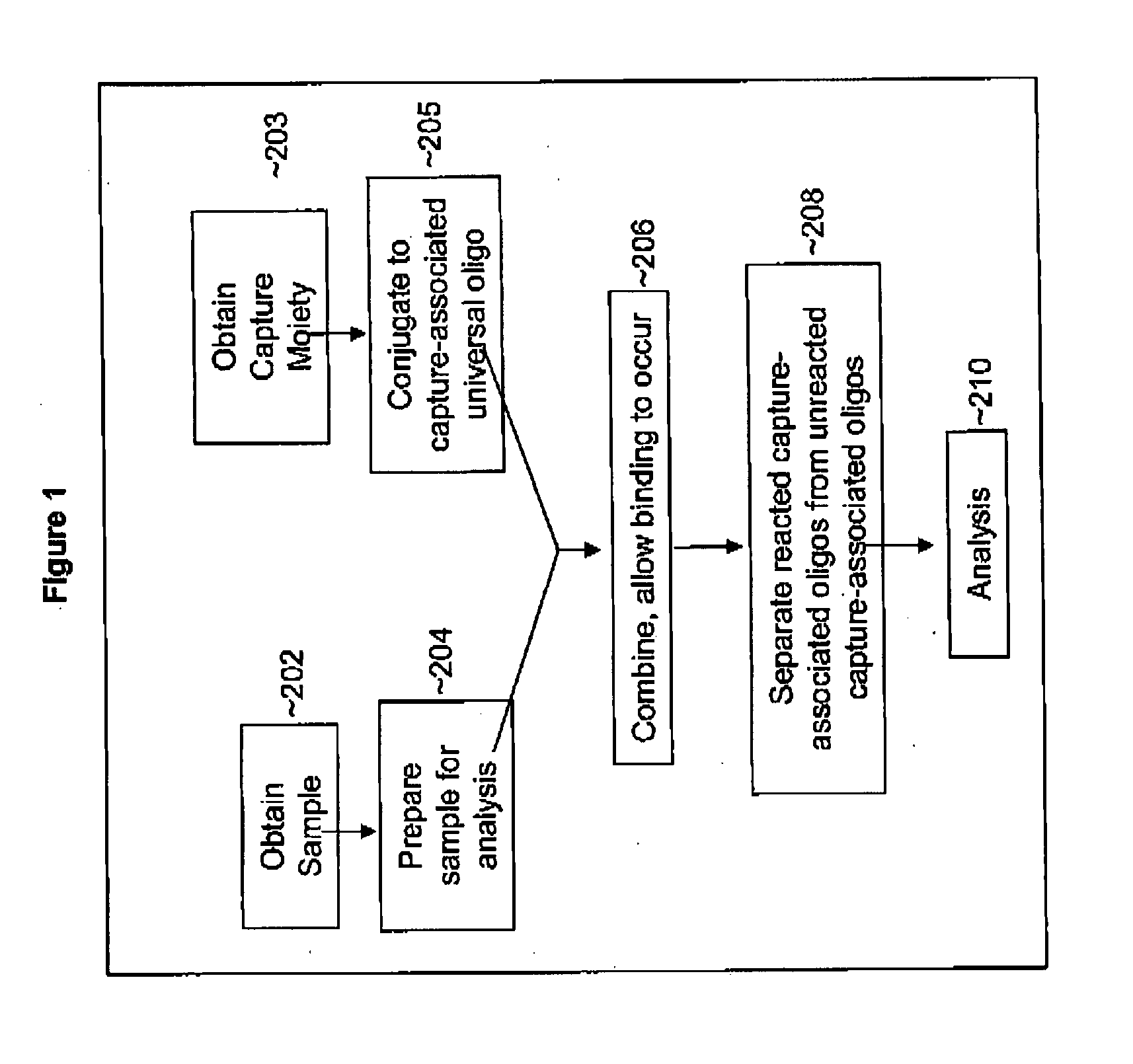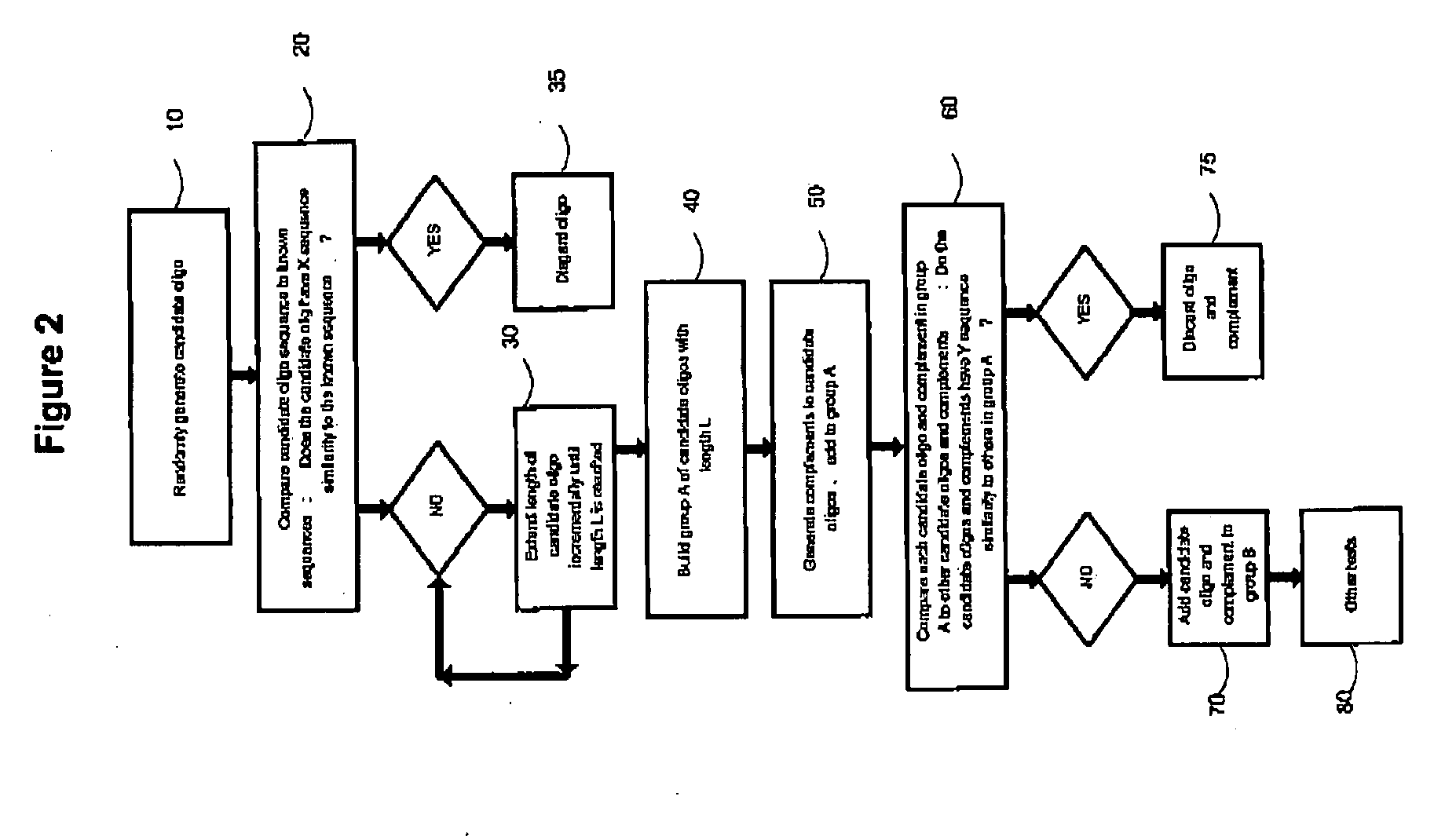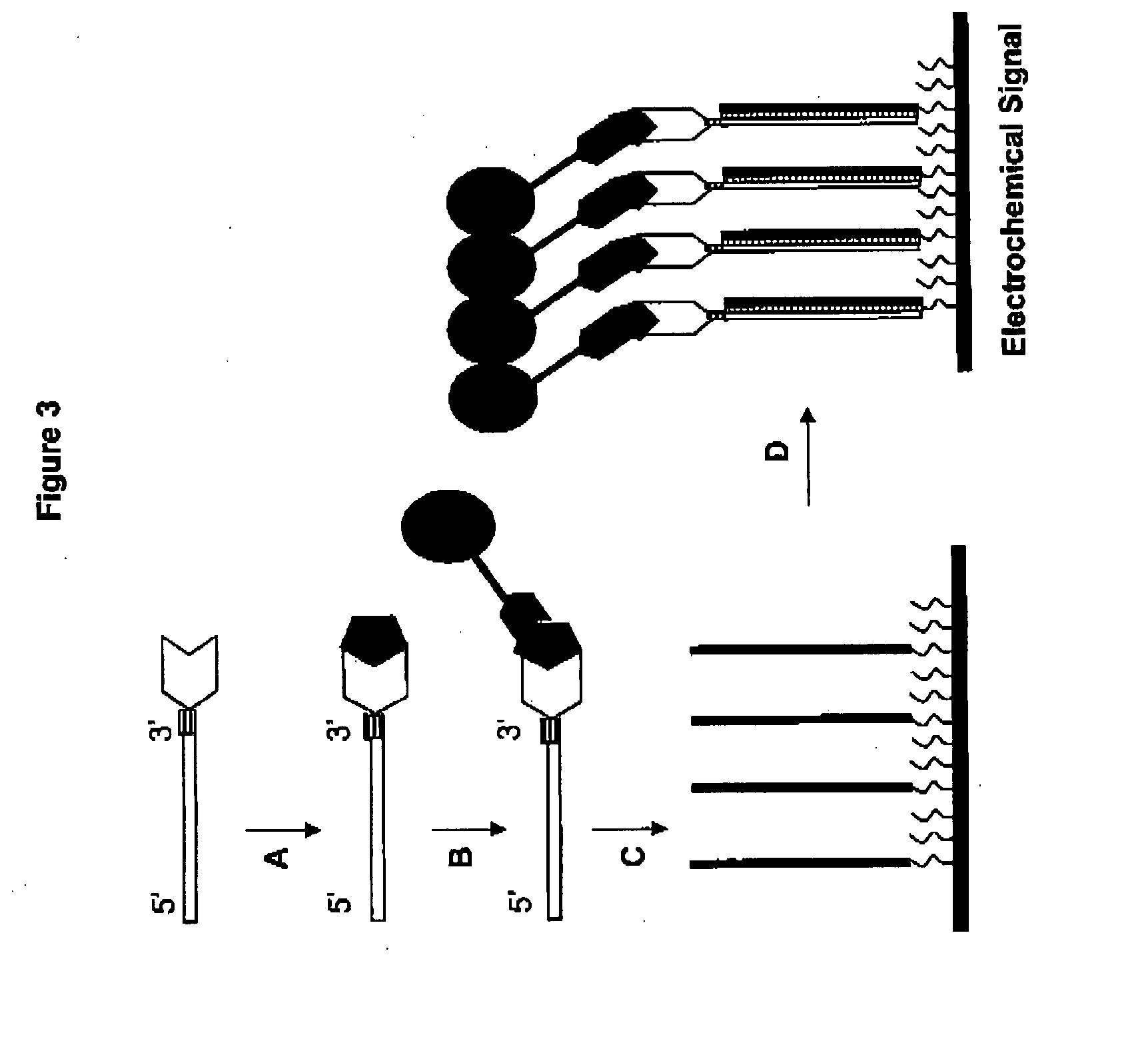Methods of detecting one or more cancer markers
a cancer marker and detection method technology, applied in the field of detection methods of one or more cancer markers, can solve the problems of ineffectiveness, inapplicability of nucleic acid based methods, and inability to detect specific or accurately, etc., and achieve rapid and facile detection and/or diagnosis, high sensitivity and selectivity, and early detection
- Summary
- Abstract
- Description
- Claims
- Application Information
AI Technical Summary
Benefits of technology
Problems solved by technology
Method used
Image
Examples
example i
Preparation of Monoclonal Antibodies
[0140] A peptide corresponding to amino acid residues in a desired cancer marker antigen is synthesized with a peptide synthesizer (Applied Biosystems) according to methods known in the art. The peptide emulsified with Freund's complete adjuvant is used as an immunogen. And administered to mice by footpad injection for primary immunization (day 0). The booster immunization is performed four times or more in total. The final immunization is carried out by the same procedure two days before the collection of lymph node cells. The lymph node cells collected from each immunized mouse and mouse myeloma cells are mixed at a ratio of 5:1. Hybridomas are prepared by cell fusion using polyethylene glycol 4000 or polyethylene glycol 1500 (GIBCO) as a fusing agent. The lymph node cells of the mouse are fused with mouse myeloma PAI cells (JCR No. B0113; Res. Disclosure Vol. 217, p. 155, 1982), and the resulting hybridomas are selected by culturing the fused ...
example ii
Preparation of DNA-Antibody Conjugates
[0143] A capture-associated universal oligonucleotide can be prepared on a solid support that has been treated with 3-amino-1,2-propanediol in order to introduce the 3′ amino group with an automated DNA synthesizer (e.g., 3400 DNA synthesizer, Applied Biosystems). Typical cleavage and purification steps are employed to obtain the modified universal oligonucleotide. The universal oligonucleotide is then incubated with N-succinimidyl 3-(2-pyridyldithio)propionate in PBS at a molar ratio between 1:30 to 1:35 for 30 minutes at room temperature. Dithiothreitol is typically added to this solution, resulting in a final concentration of 10 mM for 5 minutes. The universal oligonucleotide is then purified and recovered by applying this reaction mixture to a PBS equilibrated Sepharose column, washing the column several times, and eluting the universal oligonucleotide in a 0.6M NaCl phosphate buffer.
[0144] A monoclonal antibody is incubated with γ-maleimi...
example iii
Immobilization of Nucleic Acid Probe to a Platinum Electrode Surface
[0146] A platinum electrode is exposed to a high temperature to air-oxidize the surface of the electrode. The oxidized electrode is treated with cyanogen bromide (CNBr) to activate the oxide layer. The nucleic acid is attached to the electrode by contacting the electrode in a solution of single stranded nucleic acid. The single stranded nucleic acid is obtained by commonly employed means including, but not limited to, either standard oligonucleotide synthesis techniques or by thermal denaturation of a double stranded nucleic acid molecule.
[0147] Alternatively, a custom synthesized oligonucleotide containing a thiol group at the 5′ or the 3′ end is spotted on a gold electrode. This procedure involves placing approximately 100 nL of the probe solution containing the oligonucleotide probe (5 μmol / L), 400 mmol / L sodium chloride, and 0.1 mmol / L HCl, on the electrode and then keeping the electrode at room temperature fo...
PUM
| Property | Measurement | Unit |
|---|---|---|
| Electrical conductance | aaaaa | aaaaa |
| Electric charge | aaaaa | aaaaa |
Abstract
Description
Claims
Application Information
 Login to View More
Login to View More - R&D
- Intellectual Property
- Life Sciences
- Materials
- Tech Scout
- Unparalleled Data Quality
- Higher Quality Content
- 60% Fewer Hallucinations
Browse by: Latest US Patents, China's latest patents, Technical Efficacy Thesaurus, Application Domain, Technology Topic, Popular Technical Reports.
© 2025 PatSnap. All rights reserved.Legal|Privacy policy|Modern Slavery Act Transparency Statement|Sitemap|About US| Contact US: help@patsnap.com



